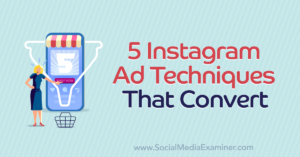We get it. On paper, social media looks great for your digital marketing. It’s like the ultimate networking event – a non-stop hive of activity and cutting-edge conversation where you can rub shoulders with customers and leads, and create large communities comprising your ideal customer. It’s scalable, varied, creative and, potentially, highly rewarding.
But doesn’t it always seem to go that a high return demands a steep investment of time, resources, and enthusiasm – and all those things deplete pretty fast when you’re not getting the results you expected.
Social media is like any other digital marketing channel in one key aspect: if you’re going to see those returns, you can’t afford to get complacent. Customers and leads aren’t afraid to scroll on by – or, worse, unfollow you – just as they’re not afraid to unsubscribe from emails or turn a blind eye to your targeted ads, particularly if repetitive or uninspiring content seems to be the name of the game.
So, that’s what you shouldn’t do. But what about what you should do? How do you get that glittering, shimmering ROI all the biggest social media success stories are bragging about?
It’s a 1:1 ratio of creativity and analytics, but the great thing is that each one supports the other. The more creative you are with your marketing efforts, the stronger your analytics will be; the better your analytics, the more you can orient that frenetic creativity toward your target audience.
Here’s how to maximize your social media ROI with analytics integrations.
Jump to Section
What’s the Key to a Successful Social Media Marketing Strategy?
Centralizing your efforts. Whether you’re focusing on one social channel or diversifying your content publishing strategy across multiple channels, maintaining quality and consistency is critical. The best way to do this is by centralizing your efforts on a single, purpose-built social media marketing platform where you and your team can oversee the whole process of building your brand persona on social media.
Visualization is key. Scheduling social posts, curating insights from social media listening, monitoring and interacting with communities across your social channels, and utilizing KPIs from your digital marketing efforts all need to be clear, reflect the state of play in real time, and keep everyone on the same page.
In other words, the more you can fit on ‘the table’, the better.
Think of a social media marketing platform as a very large table – one that can hold everything you need in order to stay on top of your efforts. It can equip you with the tools you need to listen and monitor, create and respond, and understand how to measure social media ROI.
But the best platform will go above and beyond, and offer a long list of integrations that ensure you’re able to oversee every aspect of digital marketing – all on the same table.
Mastering social media isn’t a case of luck or chance – it’s a case of having a good strategy, and the right tools to make it a reality.
Utilizing Social Media Analytics
There are two different ways to measure your success on social media. One is more subjective – like judging how well a party or social gathering is going. You look at community engagement, audience feedback in comments, and tags and shares. We can all wander onto any branded social media page and gauge how much of a positive (or negative) impact it’s having on followers.
The other way is empirical. It’s what stakeholders and c-suite execs want to see: clear insights into social media ROI with compelling B2B marketing analytics – any and all data that proves the value your efforts are having for the business in terms of moving prospects through your funnel, and makes it possible for you to measure ROI on social media.
What’s more, this data can (and should) directly inform the next stages of your strategy. With enough creativity, those stats and figures can direct you toward more engaging content and stronger community management. And don’t forget about your competitors: your data can feed into your social media brand monitoring, too.
Strong social media tracking can directly conjure up insights like:
- Sentiment analysis – how your audience and customer base feel about you. Are their tweets overwhelmingly positive? Is there a negative thread running through recent tagged posts that needs to be addressed?
- Share of voice – when it comes to relevant keywords and topics, how prominent is your brand? Are you currently a key player or a wallflower?
- Clicks and conversions – how successful are your posts at rousing action from audience members? Social publishing can be a major source of site traffic, so keep a close eye on those figures.
- Impressions – how prominent your content is on feeds.
- Reach – how many unique people you reach each time you publish.
- Engagement by network and channel
Integrating Marketing Analytics from Other Channels
The more you have on that marketing table, the more control you have over your social media ROI. While your social channels will generate invaluable insights every single day, they can’t give you the whole picture. Integrating other analytics into your social media management platform is a great way to give your strategy a boost, and take it to the next level.
Here are some key analytics integrations we offer:
- Marketo
Our social media marketing platform is the only one endorsed by Marketo, and so many of our clients benefit from integrating the two together for a more comprehensive overview of their marketing strategies’ performances.
Marketo curate insights from your email clicks, site traffic, and data driven by your CRM. When combined with social media management, understanding leads, and driving stronger MQLs toward your funnel is so much easier, and so much more intuitive. This is leveraging data to the fullest – you’ll wonder why you didn’t do it sooner. - Google Analytics
Walk into any roomful of marketing coordinators or CMOs, then Google Analytics is bound to be the single most recognized tool of the trade. By integrating your Google Analytics with your social media management, you can get a 360° view of the lead generation and acquisition process.
With Oktopost’s insights into the performance of your social posts, and Google Analytics’ data on site traffic and audience segments to get to know your leads and customers better, you’ve got exactly what you need to elevate the work you’re already doing.
Think of it like salt and pepper. On their own, they’re great – but together, they’re all you need to get the very most out of what you’re making. Producing cross-channel reports for stakeholders will illustrate ROI highly effectively, and ensure your efforts across your social networks are always underpinned by facts. - Act-On
All successful digital marketing strategies are operating in real time, with marketers prepared to action key insights the very moment they become aware of them. This is what Act-On and Oktopost have in common – the drive to equip marketers with the tools they need to adapt near-instantaneously.
Analytics are the key to targeting leads with more responsive, personalized content. By integrating Act-On with Oktopost’s social marketing platform, driving MQLs and quantifying ROI by tracking the journey from social media to conversion is much simpler, and far more effective.
Is it All About Conversions?
No. For a lot of c-suite execs and stakeholders, the bottom line is always going to be conversions. And why wouldn’t it be? Converting leads and growing your customer base is the name of the game, after all. Is this the face that launched a thousand ships? Is this the conversion rate that convinced a tableful of stakeholders?
But maximizing your social media ROI – in other words, maximizing your conversions – requires a whole smorgasbord of insights and data. You can’t afford to operate on instinct and subjective appraisals of performance alone. Data provides not only valuable insights, but contextual support for each other data point. What one data point misses another can compensate for, cover, and bring a new layer of meaning to. The more you can make analytics a central figure in your social media strategy, the better you will perform.
It’s about understanding what posts really engage your audience – what topics drive clicks and interactions – and, conversely, which posts seem to just pass social media users by as they scroll through the feed. Social media has a very specific and chaotic rhythm. For individuals and businesses, it may appear as an impenetrable stream, impossible to understand and make manageable. Of course, though, we’re here to tell you it’s not. It’s about knowing when to post on a specific subject, how to nurture leads through your social networks as well as the channels represented in your CRM, and how best to schedule your posts. Yes, social media can be chaotic, impulsive, and, ultimately, organic, but insights and data will enable you to find consistency in your posting, to find and create fixed rocky pillars on which you can stand on, so you can engage with the stream.
It’s also about being able to curate all data together in ready-to-present formats that signal the value of your social media strategy, beyond the conversions you play a part in.










